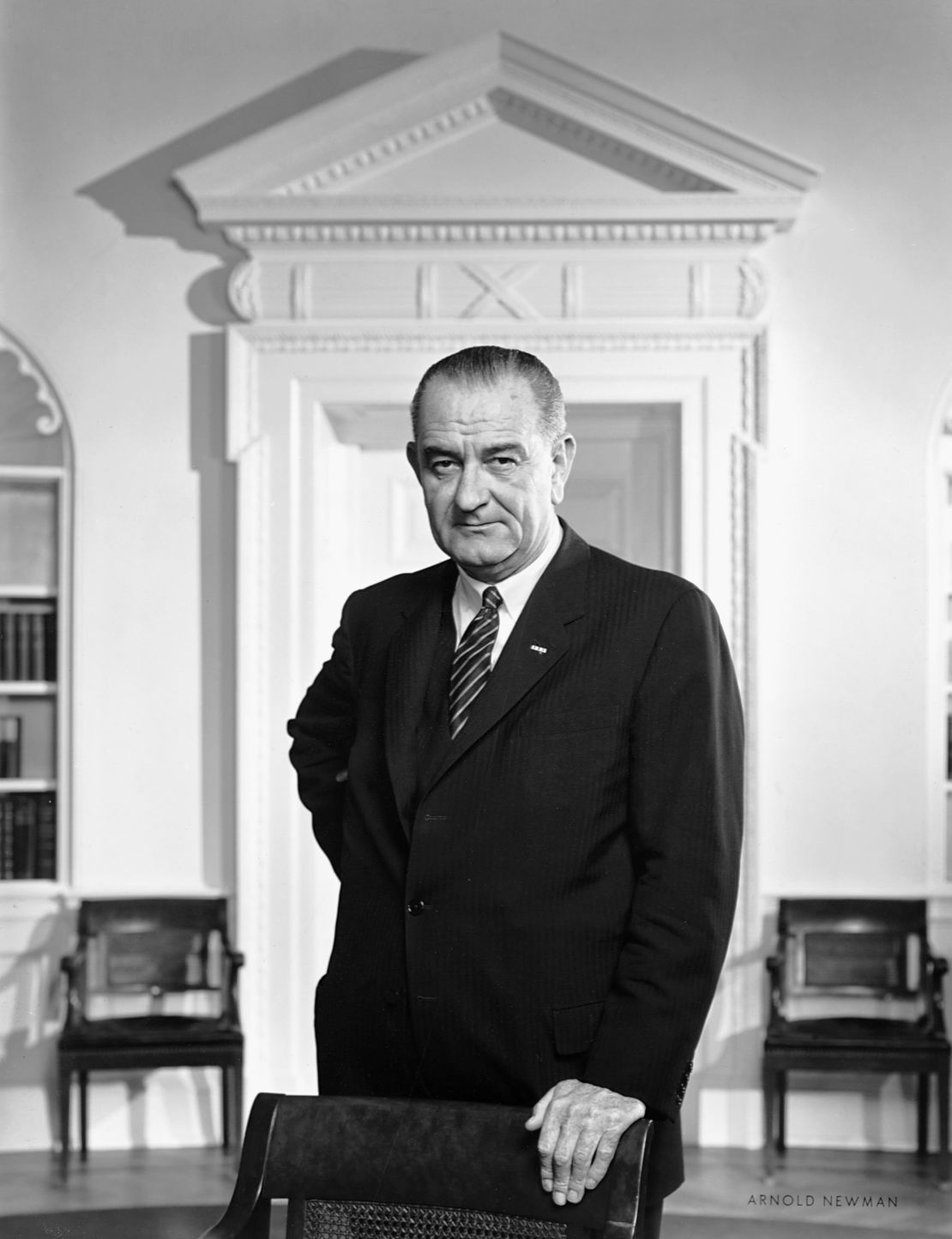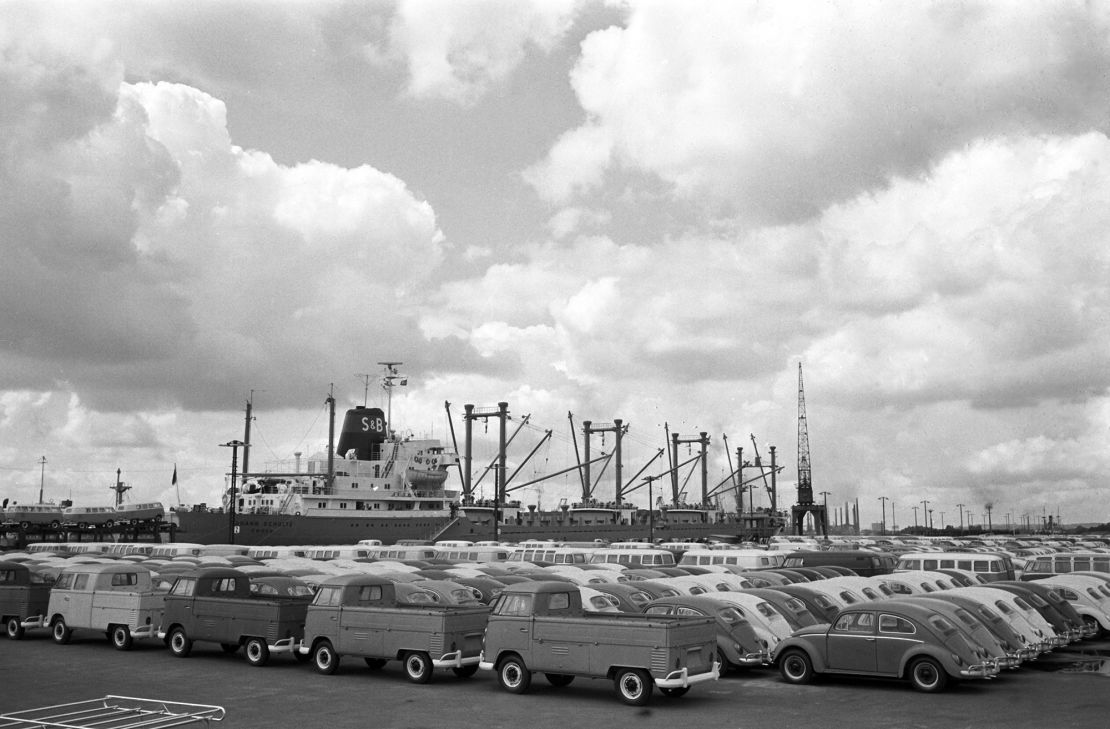Cnn
–
This is called a chicken tax, but it is taken from the microphones. And that shows why President Donald Trump’s prices could change the American economy longer than you think.
President Lyndon Johnson imposed the chicken tax in 1963, but it is still in force today, even if his supposed reason for existence is no longer existing.
The longevity of the import tax, however, emphasizes how prices can reshape the global markets, sometimes far beyond the conditions they have been put in place to contact. Trump’s trade war could change the way Americans and world stores are buying for future generations.
To date, the chicken tax essentially prevents car manufacturers from selling vans made in Europe or Asia in America. Most American microphones are built in North America, leading to massive benefits for American car manufacturers, but less choice and higher prices for millions of American buyers, as well as complicated maneuvers impressively by car manufacturers to try to get around the tax.
“Trump seems to think that he can announce very high prices, then take them back. But the prices modify economic incentives,” said Dan Ikenson, economist and former director of international trade at the Cato Institute, a libertarian reflection group. “The constituencies are developing and they take their own lives, and that is why they have lived for a long time.”
The chicken tax started, unsurprisingly, with chickens.
In 1962, European countries priced the American chicken, practically closing American poultry producers on the lucrative and growing market in Europe.
Shortly after Johnson took office in 1963, he imposed prices of “reprisals” on a number of European products, including trucks. At the time, only an American car sales ribbon was imports and few Americans had even heard of Toyota or Honda.

The 25% prices on “motor vehicles for the transport of goods” must mainly punish the German automaker Volkswagen, which was the only foreign automaker making breakthroughs on the American market at the time. There were also American prices on potato starch, dextrin and brandy, three other important products for European exporters. But the American beneficiaries of these prices did not have almost the political weight as an automotive industry, said Ikenson.
By removing foreign competition, the chicken tax opened the door to the “three large” American manufacturers, General Motors, Ford and Chrysler, to increase prices on their trucks. The prices of American built trucks, although they are not subject to prices, increased by approximately 5% to 6% per year, while car prices have increased by only 2% per year, according to the preliminary analysis of car and truck prices by Jonathan Smoke, chief economist of COX Automotive.
Stronger benefits meant that American car manufacturers focused more on truck production. Thus, even when Europe abandoned the Tax on American Chickens in 1964, the Big Three and the Syndicat des workers have fallen their considerable muscle to maintain imports on the foreign trucks in place, said Smoke.
“He has never been disputed or politically questioned,” said Smoke.
Few or no truck buyers realize that the tax meant that they paid higher prices, added smoke. And as it stimulated American production, “the average American would say that it is not a bad thing.”
The chicken tax has even survived many series of world trade agreements aimed at promoting free trade, including the creation of the World Trade Organization in 1995.
Indeed, once the prices in place, they tend to stay in place, explains Lawrence Friedman, a world lawyer. For example, there are still prices on televisions with cathodic shelves – the large bulky type that fell in disgrace in the place of flat screens – and those with integrated magnetoscope players.

But with commercial restrictions comes the search for loopholes.
These practices are common in the complex world of rules and commercial prices, said Friedman. The term in the trade industry is “tariff engineering”.
To get around the chicken tax, some foreign car manufacturers have shipped trucks to the United States without truck beds attached to the chassis. Others have added additional seats so that trucks are classified as a passenger vehicles. The kid Subaru added two seats to the back in his truck bed.
And it was not only foreign car manufacturers who played games to avoid the chicken tax. Between 2009 and 2013, Ford, which built the Connect Transit van in Europe, sent them to the United States with additional seats that would be removed once they have erased customs. The Ministry of Justice finally sentenced to Ford $ 365 million in 2024 on the issue.
However, it was the North American free trade agreement from 1994, or Alena, which really opened a legal path around the chicken tax.
Alena opened trade borders with Canada and Mexico, so car manufacturers soon built trucks for the American market both north and south of the border. General Motors, for example, builds its best-selling truck, Silverado, Canada and Mexico as well as in the United States.

With taxed collection imports, many Asian and European car manufacturers have turned to a different niche (less pricing): cars. Smaller and more fuel economy cars.
The timing was on their side. The prices of gas increasing in the early 1970s, the Americans flocked to this kind of cars. When foreign brands began to build American plants, starting with a Honda factory in Ohio in 1982, they first focused on cars, not trucks.
However, foreign brands did not build the American factories because of the chicken tax, but because it was cheaper to get closer to the place where cars would ultimately be sold.
“The price is not really a direct foreign investment inductor as we think,” said Ikenson. “There was a ton of investment to produce cars, and the price on them was only 2.5%.”
Even with the combination of the closure of foreign vans and the love of Americans for trucks, the overall share of Big Three on the American automotive market has continued to shrink over the past 60 years.
In 2007, Asian and European brands, for the first time captured the majority of sales of American cars and trucks on the three major traditional car manufacturers, according to the sales reports of companies.
Although the three large ones still dominate truck sales, they now represent only 38% of overall American automobile sales, producing fewer vehicles in their American factories last year – 4.6 million – than the 4.9 million built by foreign car manufacturers, according to data from S&P Global Mobility.
The way Trump’s prices change the market and how long they stay, is difficult to say, said Cox Automotive smoke.
But whatever their duration, the chicken tax shows that the cancellation of prices is never so simple. And even when the prices increase the prices of cars and cost more automotive jobs they create, the idea behind them is a powerful story, said Smoke.
“I would not be surprised that this example of a price that Americans will eventually support,” he said.


